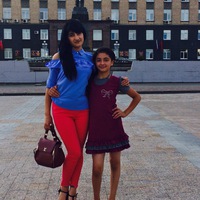
3. Почему о Средних веках часто говорят как о времени упадка? Можно ли на это что-либо возразить?
 0
0
 0
0
Ответы на вопрос
 Внимание! Ответы на вопросы дают живые люди. Они могут содержать ошибочную информацию, заблуждения, а также ответы могут быть сгенерированы нейросетями. Будьте внимательны. Если вы уверены, что ответ неверный, нажмите кнопку "Пожаловаться" под ответом.
Внимание! Ответы на вопросы дают живые люди. Они могут содержать ошибочную информацию, заблуждения, а также ответы могут быть сгенерированы нейросетями. Будьте внимательны. Если вы уверены, что ответ неверный, нажмите кнопку "Пожаловаться" под ответом.

Первобытные общества, Египет фараонов, державы Передней Азии, ранние государства Индии и Китая, античные Греция и Рим — все это Древний мир. В древности люди научились добывать огонь и плавить металлы, возводить храмы и строить корабли, писать иероглифами, клинописью и буквами. В древности шли в битвы македонские фаланги и римские легионы, мчались в бой ассирийские боевые колесницы и конница китайских императоров. В древности были построены египетские пирамиды, Великая Китайская стена, афинский акрополь и римский Колизей. В древности рухнула Вавилонская башня и сгорела Троя, аргонавты искали золотое руно. В древности устраивались Олимпийские игры и человеческие жертвоприношения. В древности жили Конфуций и Будда, Моисей и Иисус Христос. Как много вместила в себя эта эпоха — самая длинная в истории человечества. Но в V в. с падением Римской империи она подходит к концу.
Полторы тысячи лет назад, с крушением Рима началась новая эпоха всемирной истории. Ее принято называть средними веками, или средневековьем. Средневековье продолжалось тысячу лет, пока примерно в XV в. на смену ему не пришло Новое время.
 0
0
 0
0

The Perception of the Middle Ages as a Time of Decline
The Middle Ages, spanning roughly from the 5th to the 15th century, is often referred to as a time of decline or "Dark Ages." This perception stems from several factors that influenced the historical narrative. However, it is important to note that this view is not universally accepted, and there are counterarguments that challenge this characterization.
1. Political Fragmentation and Feudalism: During the Middle Ages, Europe experienced political fragmentation, with power being decentralized among various feudal lords and local rulers. This led to a lack of centralized authority and stability, which is often associated with a sense of decline The feudal system, characterized by vassalage and the exchange of land for military service, further contributed to this perception of political disarray.
2. Economic Challenges: The Middle Ages witnessed economic challenges, including agricultural difficulties, population decline due to plagues, and limited technological advancements compared to the preceding Roman Empire. These factors are often cited as evidence of economic stagnation and decline.
3. Cultural and Intellectual Shifts: The Middle Ages saw a shift in cultural and intellectual focus, with the decline of classical learning and the rise of religious dominance. The Church played a central role in society, and its influence sometimes limited scientific and intellectual progress. This shift away from the classical world and the suppression of certain forms of knowledge have contributed to the perception of the Middle Ages as a time of intellectual decline.
4. Negative Historical Narratives: Historical narratives often shape our perception of different periods. The Renaissance, which followed the Middle Ages, sought to distance itself from the preceding era and emphasized the revival of classical learning and culture. This desire to contrast the Renaissance with what came before led to a negative portrayal of the Middle Ages as a time of darkness and decline.
Counterarguments and Alternative Perspectives
While the perception of the Middle Ages as a time of decline is prevalent, there are counterarguments and alternative perspectives that challenge this characterization.
1. Cultural and Intellectual Achievements: The Middle Ages witnessed significant cultural and intellectual achievements, such as the development of Gothic architecture, the preservation and translation of ancient texts by scholars, and the establishment of universities. These accomplishments demonstrate that the Middle Ages were not solely a period of decline but also a time of cultural and intellectual progress.
2. Social and Economic Advancements: Despite the challenges faced during the Middle Ages, there were also social and economic advancements. The growth of towns and trade, the emergence of guilds, and the development of new agricultural techniques contributed to economic growth and social mobility.
3. Political Stability and Innovation: While political fragmentation was a characteristic of the Middle Ages, there were also instances of political stability and innovation. For example, the Carolingian Empire under Charlemagne achieved a level of political unity and cultural revival, and the Magna Carta in England laid the foundation for the rule of law.
4. Diverse Regional Experiences: It is important to recognize that the Middle Ages spanned a vast geographical area and varied significantly across regions. Different regions experienced different levels of political, economic, and cultural development. Therefore, it is essential to consider the diverse regional experiences when evaluating the overall perception of the Middle Ages.
In conclusion, while the Middle Ages are often characterized as a time of decline, there are counterarguments and alternative perspectives that challenge this perception. The historical narrative surrounding the Middle Ages is complex and influenced by various factors. It is crucial to consider the diverse achievements, advancements, and regional experiences of the period to gain a more nuanced understanding of this era.
 0
0
 0
0
Похожие вопросы
Топ вопросов за вчера в категории История
Последние заданные вопросы в категории История
-
Математика
-
Литература
-
Алгебра
-
Русский язык
-
Геометрия
-
Английский язык
-
Химия
-
Физика
-
Биология
-
Другие предметы
-
История
-
Обществознание
-
Окружающий мир
-
География
-
Українська мова
-
Информатика
-
Українська література
-
Қазақ тiлi
-
Экономика
-
Музыка
-
Право
-
Беларуская мова
-
Французский язык
-
Немецкий язык
-
МХК
-
ОБЖ
-
Психология
-
Физкультура и спорт
-
Астрономия
-
Кыргыз тили
-
Оʻzbek tili




























